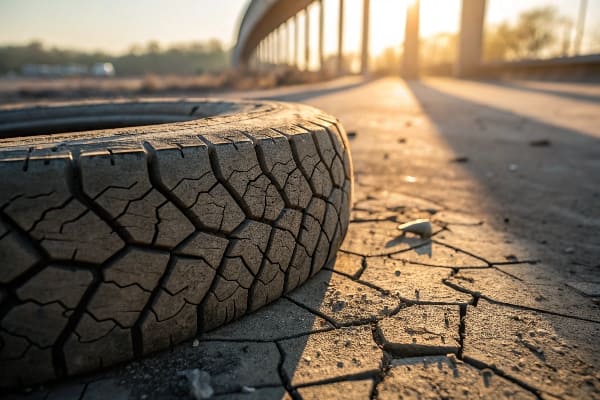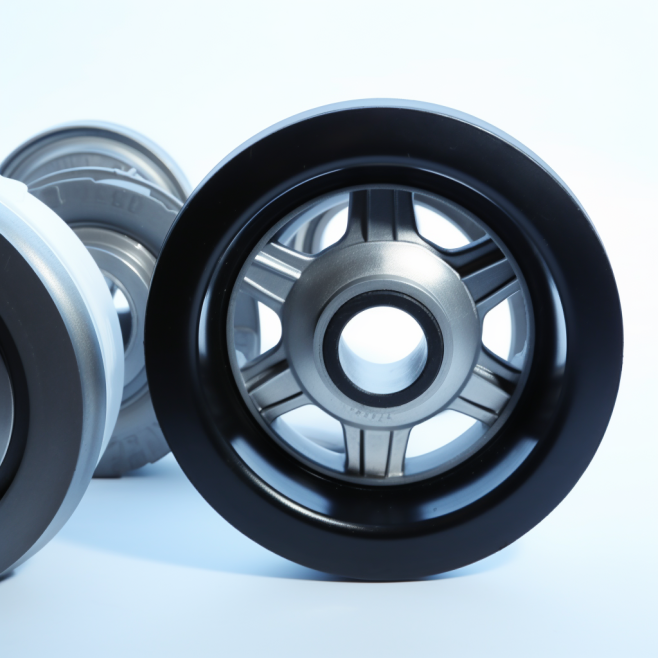Are you wondering if synthetic rubber1 is susceptible to oxidation? Just like natural rubber, synthetic rubber can undergo oxidation, which can affect its performance and durability.
Yes, synthetic rubber can be oxidized. The process of oxidation occurs when rubber is exposed to oxygen, heat, and sunlight over time, leading to changes in its physical properties such as hardening, cracking, and loss of elasticity. The extent of oxidation depends on the type of synthetic rubber and its chemical composition.

Let’s dive deeper into how and why synthetic rubber undergoes oxidation and the factors that influence this process.
What Causes Oxidation in Synthetic Rubber?
Oxidation is a natural process that happens when rubber reacts with oxygen in the air.
The oxidation process in synthetic rubber involves the breaking of chemical bonds within the polymer structure, leading to the formation of free radicals. These free radicals then react with oxygen, causing the material to degrade. Factors like heat, UV radiation, and environmental exposure accelerate this process.
Factors that Accelerate Oxidation
| Factor | Impact on Oxidation |
|---|---|
| Heat | Accelerates the breakdown of rubber |
| UV Radiation | Breaks down the molecular structure |
| Oxygen Exposure | Causes degradation over time |
| Environmental Conditions | Pollution and chemicals increase oxidation |
Synthetic rubber types, such as EPDM or SBR, can have varying resistance to oxidation depending on their formulation and the additives used during production.
Which Synthetic Rubbers Are More Susceptible to Oxidation?
Not all synthetic rubbers are equally prone to oxidation.
Rubbers like Styrene-Butadiene Rubber (SBR)2 and Natural Rubber (NR) are more vulnerable to oxidation due to their chemical composition. On the other hand, rubbers like Ethylene Propylene Diene Monomer (EPDM) and Fluoroelastomers (FKM) are more resistant to oxidation due to their molecular structure and the presence of stabilizing additives.

Oxidation Resistance in Different Rubber Types
| Synthetic Rubber Type | Oxidation Resistance | Best Use |
|---|---|---|
| SBR (Styrene-Butadiene) | Moderate to low | Tires, automotive components |
| EPDM (Ethylene Propylene) | High | Automotive seals, roofing |
| NBR (Nitrile) | Moderate | Oil seals, gaskets |
| FKM (Fluoroelastomer) | Excellent | Aerospace, chemical processing |
Rubbers like FKM and EPDM have superior oxidation resistance3, making them ideal for use in harsh environments where exposure to heat and oxygen is constant.
How Does Oxidation Affect Synthetic Rubber?
When synthetic rubber undergoes oxidation, its physical properties begin to degrade.
Oxidation causes rubber to lose its elasticity, become brittle, and develop cracks. This makes the rubber less flexible and reduces its ability to absorb shocks or perform in demanding environments. In extreme cases, oxidation can lead to complete material failure.
Effects of Oxidation on Rubber Properties ✅
| Property | Impact of Oxidation |
|---|---|
| Elasticity | Decreases, rubber becomes stiffer |
| Strength | Weakens, more prone to breakage |
| Durability | Significantly reduced |
| Surface Appearance | Cracking, discoloration |
The degradation caused by oxidation can shorten the lifespan of rubber components, especially in automotive, industrial, and outdoor applications.
How Can Oxidation in Synthetic Rubber Be Prevented?
Preventing oxidation in synthetic rubber involves a combination of material selection and proper care.
To reduce the effects of oxidation, manufacturers use stabilizers and antioxidants during the production of synthetic rubber. These additives help protect the rubber from oxygen and UV radiation. Additionally, storing rubber products in cool, dark environments and avoiding exposure to harsh chemicals can help minimize oxidation.
Methods to Prevent Oxidation
| Method | Effect on Oxidation |
|---|---|
| Antioxidant Additives4 | Prevents free radical formation |
| UV Stabilizers5 | Protects against UV radiation |
| Proper Storage[^6] | Minimizes environmental exposure |
| Coatings | Protects surface from oxygen and UV |
Preventing oxidation can extend the life of synthetic rubber products, especially in critical applications like automotive parts and industrial seals.
What Are the Symptoms of Oxidized Rubber?
Wondering how to spot oxidized synthetic rubber?
Oxidized rubber typically shows visible signs such as cracking, hardening, discoloration, and a loss of flexibility. If a rubber component is exposed to UV light or extreme temperatures for long periods, it may start to degrade, which can be seen in the form of surface damage or brittleness.
Identifying Oxidized Rubber
| Symptom | Description |
|---|---|
| Cracking | Small visible cracks on the surface |
| Hardening | Rubber becomes stiff and brittle |
| Discoloration | Rubber turns yellow or grey |
| Loss of Flexibility | Rubber loses its stretchability |
These symptoms indicate that the rubber has undergone significant oxidation and may need to be replaced.
Conclusion
Yes, synthetic rubber can be oxidized, and its performance can degrade over time when exposed to oxygen, heat, and UV radiation. Synthetic rubbers such as SBR and NBR are more prone to oxidation, while materials like EPDM and FKM are more resistant. To prevent oxidation, stabilizers and antioxidants are used in rubber production, and proper storage can help extend the material’s lifespan.
🚀 Need High-Quality Synthetic Rubber for Your Industry?
Contact Julong Rubber today or Request a Custom Quote for synthetic rubber products with enhanced resistance to oxidation!
Understanding synthetic rubber's properties and oxidation can help in selecting the right materials for various applications. ↩
Learning about SBR's properties can help in making informed decisions for automotive and industrial uses. ↩
Explore how antioxidant additives can significantly enhance the durability and lifespan of synthetic rubber products. ↩
Learn about the role of UV stabilizers in preventing degradation of synthetic rubber due to UV exposure. ↩
Discover effective storage techniques that can help maintain the quality and longevity of synthetic rubber materials. ↩






